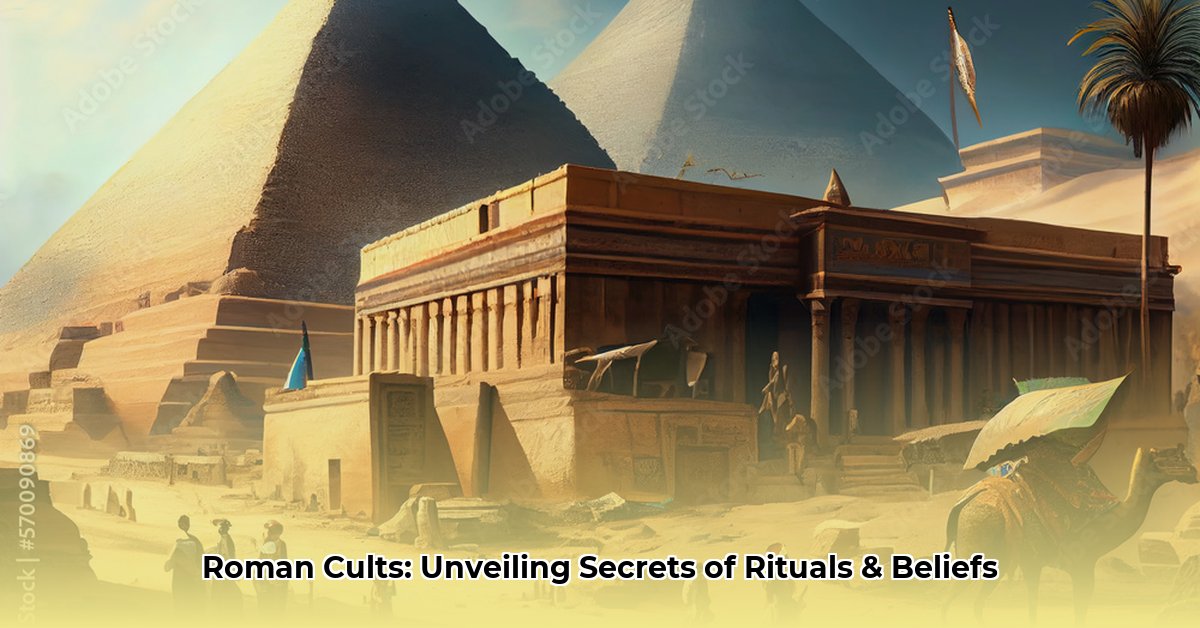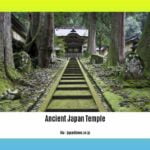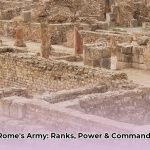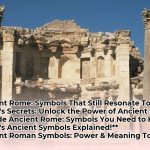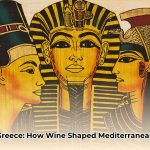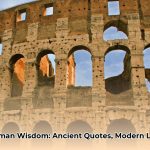Ever wondered about the hidden spiritual pathways in the ancient world, far removed from the grand public temples and civic ceremonies? Imagine secret societies, hushed promises, and life-altering initiation rituals that offered a profound, personal connection with the divine. This is the fascinating realm of Greco-Roman mystery cults—a world where individuals, known as mystai, sought deeper meaning, spiritual purification, and the promise of a better afterlife. Unlike the traditional state religions, these cults, including the renowned Eleusinian Mysteries and the widespread rites of Isis and Mithras, provided an intimate, transformative experience. Learn about ancient Roman symbols and their roles. Join us as we uncover what made these mysteries so uniquely compelling, how their ceremonies reshaped participants, and why their influence eventually waned with the ascendant force of Christianity.
Exploring the Enigmatic World of Greco-Roman Mystery Cults
Greco-Roman mystery cults emerged as powerful alternatives to the civic-oriented, state-approved religions, offering initiates a uniquely personal spiritual journey and a profound sense of communal belonging. Defined by their inherent secrecy, these cults revolved around an individual’s direct relationship with specific gods and goddesses, often focusing on transformative themes such as death, rebirth, and spiritual purification. This emphasis on individual transcendence sharply distinguished them from the public, duties-focused nature of traditional Roman polytheism.
The decision to undergo initiation into a mystery cult was a pivotal, life-altering spiritual quest. Initiates, or mystai, participated in meticulously guarded ceremonies that promised spiritual betterment, enlightenment, and hope for a favorable destiny in the afterlife. This stood in stark contrast to state religions, which primarily focused on a citizen’s duties, social integration, and the collective well-being of the polis. While the precise details of these sacred rituals remain largely unknown due to the strict vows of silence taken by initiates, they undeniably offered a direct, intimate link to the divine, potentially filling a spiritual void left by formal religious practices.
The Most Influential Mystery Cults of Antiquity
The Eleusinian Mysteries, dedicated to the agricultural goddesses Demeter and her daughter Persephone, stand as one of the earliest and most impactful Greco-Roman mystery traditions. Originating in Eleusis, near Athens, their annual rituals powerfully reenacted the myth of Persephone’s abduction by Hades and her eventual joyful return, symbolizing the cyclical nature of life, death, and renewal—from the barrenness of winter to the abundance of spring. This potent narrative offered initiates the profound hope of immortality and a more blessed afterlife, a deeply compelling promise in the ancient world. Initiations often involved a sacred procession from Athens to Eleusis, ritual purification in the sea, and a culminating experience within the vast Telesterion hall, where sacred objects were revealed and secret rites, possibly involving the hallucinogenic drink kykeon, fostered revelatory states. The epopteia, the higher degree of these mysteries, may have included a dramatic, awe-inspiring display of agricultural fertility, such as the showing of an ear of wheat.
The Dionysian Mysteries, centered on Dionysus, the god of wine, ecstasy, and untamed nature, later evolved into the more ascetic Orphic Mysteries. Dionysian rituals were characterized by ecstatic experiences, known as Bacchanalia or orgia, often involving frenzied dancing, music, and the communal consumption of wine. These practices aimed to bring worshippers into direct communion with the divine by transcending ordinary consciousness, offering a powerful sense of liberation. Orphism, influenced by the mythical poet Orpheus, emphasized the soul’s divine origin and its journey through reincarnation. Orphic initiates followed strict rules, including dietary restrictions (often vegetarianism) and adherence to a unique cosmology that saw humanity born from the ashes of the Titans who dismembered Dionysus-Zagreus, carrying a burden of “original sin” that purification could alleviate. Gold tablets (lamellae) buried with initiates attest to their hope for eternal bliss.
Eastern cults, such as the veneration of Isis from Egypt and Mithras from Persia, also gained significant popularity and widespread adoption across the Greco-Roman world. Isis was revered as a universal goddess, embodying roles as a mother goddess, protector, healer, and guide to the afterlife. Her cult’s inclusivity, welcoming people from all social strata including women and slaves, deeply resonated with a diverse populace. Her rites included daily ceremonies in Isea (temples), processions like the Navigium Isidis (Festival of the Ship of Isis), and secret initiations promising salvation and protection.
Mithraism, a predominantly male-only cult, was particularly popular among Roman soldiers due to its emphasis on loyalty, discipline, and courage. Its mysteries were celebrated in mithraea, underground temples often designed to resemble caves, creating an immersive and atmospheric experience. The central symbolic ritual was the tauroctony, depicting Mithras slaying a bull, an act believed to have cosmic significance, often interpreted as a stellar map. Initiates ascended through a strict hierarchy of seven grades (e.g., Corax, Miles, Leo, Pater), undergoing demanding rites that likely involved blindfolds, bonds, and symbolic challenges, culminating in a handshake symbolizing their unbreakable bond (syndexioi).
Other influential cults included the Samothracian Mysteries, popular with sailors seeking protection from the perils of the sea, and the cult of Cybele, the Great Mother, characterized by ecstatic music, frenzied dancing, and the dramatic taurobolium, a ritual bull sacrifice where initiates were bathed in the animal’s blood for purification and rebirth.
Distinct Differences: Mystery Cults vs. State Religion
The fundamental distinction between mystery cults and traditional Roman religion lay in their prioritization of personal salvation and spiritual enlightenment. Official state religions emphasized civic duty, maintaining social order, and reverence for traditional gods through public sacrifices and festivals. In contrast, mystery cults functioned more as exclusive, soul-focused spiritual journeys. For instance, while state religion focused on Jupiter as the protector of Rome, the Eleusinian Mysteries provided initiates with a profound, individual hope for a more positive existence beyond death.
These cults fostered tightly knit, exclusive communities, a stark contrast to the often impersonal nature of public religious events. Their initiation rituals, deliberately shrouded in secrecy, cultivated a sense of exclusivity and profound belonging among members. Shared meals, dances, and specific ceremonies significantly strengthened the bonds within each cult, cultivating a powerful sense of camaraderie and shared purpose. Many devoted members undertook rigorous purifying rituals, periods of fasting, and even sexual abstinence as part of their quest for spiritual enlightenment, providing a profound sense of meaning and direction.
| Feature | Greco-Roman Mystery Cults | Traditional State Religion |
|---|---|---|
| Focus | Personal salvation, afterlife, spiritual transformation | Civic duty, public welfare, honoring state gods |
| Access | Open to initiates regardless of social status (generally) | Tied to citizenship and social standing; public participation |
| Rituals | Secret, involving initiation, purification, and symbolic acts | Public, focused on sacrifices, festivals, and processions |
| Emphasis | Individual experience, mystical union, and growth | Collective identity, social cohesion, and state stability |
| Appeal | Offered meaning, hope, and community in a complex world | Reinforced social hierarchy and political order |
| Community | Exclusive, tightly-knit groups of initiates | Broad, inclusive participation for all citizens |
The Ascent of Christianity and the Decline of Paganism
The rise of Christianity posed a significant, ultimately insurmountable challenge to the established Greco-Roman mystery cults. Initially viewed by Rome as a superstitio—a strange, potentially subversive deviation from their highly ritualistic traditions—Christianity’s secretive nature and stark monotheistic divergence from established polytheistic customs caused considerable apprehension. While rooted in Judaism, early Roman Christians, through various theological developments and missionary efforts, forged a distinct identity within the empire.
From Persecution to Primacy: Christianity’s Growth
Before Emperor Constantine, Christianity experienced gradual yet remarkably consistent growth, largely fueled by dedicated missionaries like St. Peter and St. Paul, and the formation of tightly knit Christian communities across the empire. This era was fraught with significant trials, as emperors such as Nero, Domitian, and Diocletian actively targeted Christians, often accusing them of “atheism” for refusing to worship Roman gods or partake in imperial cults, and even for alleged subversive rituals. Despite these grave challenges, Christianity demonstrated remarkable resilience, solidifying its presence and expanding its reach throughout the vast Roman Empire. This sustained growth amidst adversity, often leading to martyrdom, demonstrated a profound conviction among its adherents.
A truly pivotal turning point arrived with Emperor Constantine’s embrace of Christianity in the early 4th century. The Edict of Milan in 313 CE, co-authored by Constantine, granted religious freedom across the empire, effectively drawing a line under centuries of often brutal persecution. While historians continue to debate Constantine’s precise motivations for his conversion, his unwavering support demonstrably altered the course of Christianity. He notably convened the Council of Nicaea in 325 CE to address significant theological disputes and foster doctrinal unity among Christian factions. Later, Emperor Theodosius I, through the Edict of Thessalonica in 380 CE, officially declared Nicene Christianity as the Roman Empire’s sole legitimate state religion, cementing its supremacy and marking a definitive end to official pagan support.
The Eclipse of Paganism: A New Era Dawns
The triumph of Christianity inevitably ushered in the substantial decline of paganism, including the mystery cults. Imperial decrees beginning in 391 CE, such as Theodosius I’s definitive ban on pagan worship, initiated an era of temple destruction and the systematic suppression of traditional cult practices. For example, the sanctuary of Eleusis was destroyed around 395 CE by the Goths and never rebuilt. Traditional pagan temples faced either conversion into Christian churches or outright demolition, and long-held practices were systematically suppressed. This dramatic societal shift was also powerfully propelled by Christianity’s widespread appeal to marginalized individuals—including slaves, women, and the underprivileged—who found profound hope, an inclusive community, and a clear path to salvation in its message of love and charity. This compelling narrative of inclusivity profoundly reshaped an entire society, demonstrating the power of a belief system to transform social hierarchies.
Despite the suppression, some scholars debate the extent of influence of these mystery cults on early Christian ceremonies and beliefs. While some have proposed parallels between Christian baptism and mystery initiations, or the Eucharist and sacred meals, as well as the concept of a dying and resurrecting deity, most scholarship emphasizes their distinct origins. Christianity fundamentally differentiated itself through its universal appeal, its rigorous monotheism, and its strict demand that adherents renounce all other gods and pagan rites, presenting a clear contrast to the limited membership and often esoteric nature of the mystery cults. This historical shift underscores a fundamental transformation in the religious landscape of the Roman world.
The profound rise of Christianity had a sweeping and enduring impact on Roman culture, law, and society. Christian ethics significantly shaped legal reforms, leading to more humane treatment of prisoners and slaves. It also spurred remarkable advancements in Roman art and architecture; mosaics and illuminated manuscripts emerged as prominent forms of Christian expression, flourishing within newly built and converted churches across the empire. Furthermore, the legacy of Roman Christianity extends far beyond its historical setting, profoundly molding Western civilization’s values, ethics, and artistic traditions. The Christian Church played a pivotal role in preserving ancient Roman literature and knowledge, a contribution that continues to influence modern legal, ethical, and cultural structures. Its all-embracing concept of universalism laid foundational groundwork for modern human rights, and its strong emphasis on compassion has inspired numerous social movements throughout history.
- Unearth ancient rome achievements: Engineering feats & legal legacies, examined - August 13, 2025
- Unlock ancient rome army ranks: Power, impact & legion command - August 13, 2025
- Conquer Your Exam: Ancient Greece Quiz Ace It Now! - August 13, 2025
